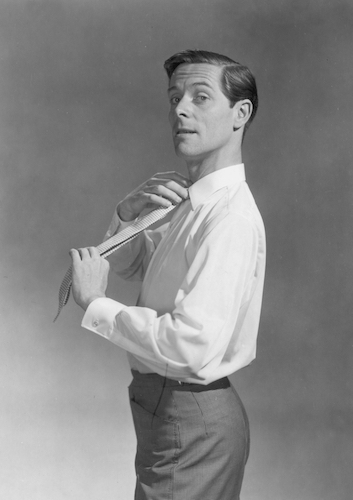The Necktie: A Brief History
Images by TooMuchCoffeeMan/Pixabay; Chaloner Woods/Stringer/Getty Design Features Men's Ties
Neckties come in so many different colors, patterns and styles that they are a perfect way to express one’s personality. For that reason, Dad’s probably tired of you gifting him one for Father’s Day. (He can pick out his own, thank you very much.) We examine the history of this seemingly useless ornamentation.
The origin of neckwear dates back to 221 B.C. where the tomb of China’s first emperor, Shih Huang Ti, contained the terracotta army outfitted in what is the first known necktie. For expertise on the history of neckties, we turned to Sarah Gibbings’ book The Tie. “What is remarkable about the discovery of the 7,500 soldiers wearing their 7,500 neckcloths is that they are an archeological and iconographic freak. No other pictures or statues of Chinese—or, indeed, of any other people—would show evidence of neckcloths for centuries to come.”

Many believe that the roots of the modern necktie trace back to the 17th century during the Thirty Years’ War in France. The French were inspired by Croatian mercenaries’ neckwear, now known as the cravat. Paintings from the mid-1600s depict European noblemen with dressed-up necks, Gibbings notes. Shops in Paris at that time stocked lace scarves, jabots and neck kerchiefs.
Ties changed in the 20th century when neckwear became more casual. As the administrative work force grew, laborers longed for a tie that was comfortable and easy to manipulate. In 1924, American tailor Jesse Langsdorf patented a tie-making process. His tailoring experience led him to discover that cutting fabric at a 45-degree angle, on the bias, gave it elasticity and a more attractive drape, which eliminated tie curling.
In the late 1950s, ties got skinny, and in the 1970s they got fat—real fat. Nowadays, virtually anything goes. Self-expression is the new norm. Business casual dominates, and men show off their personality through kooky-patterned socks, jewelry, tattoos and hairdos.
Ties remain relevant for their ability to visually define intent. A power tie now has just as much bearing as it did hundreds of years ago. So, if you insist on getting Dad that tie for Father’s Day, make sure you have a real understanding of his sense of style and where he’s headed.
Emily Davidson Nemoy is a freelance writer based in Nashville, Tenn. When she’s not at her computer or on her yoga mat, she can be found at live music venues happily spending her excess cash on concert tickets.